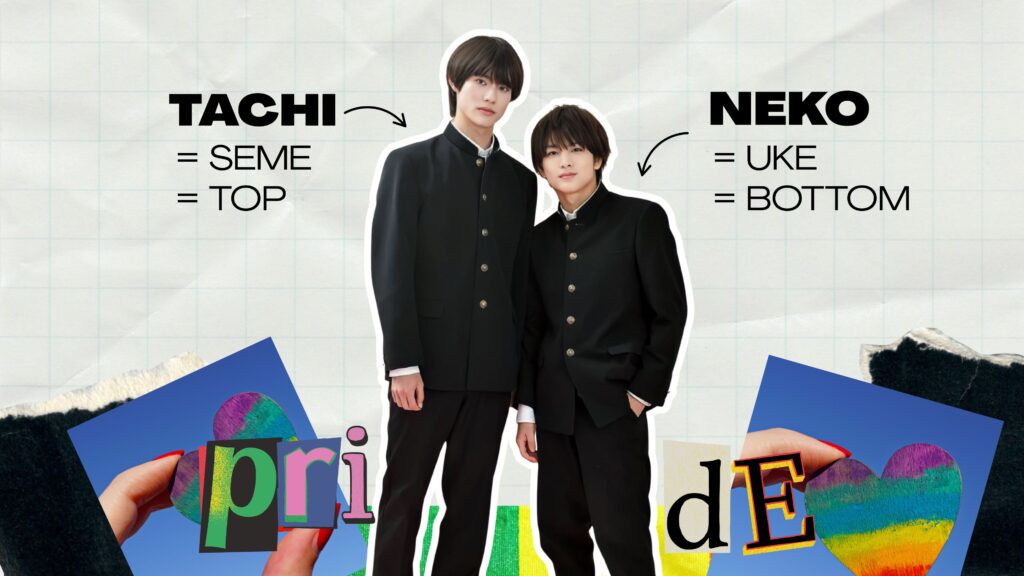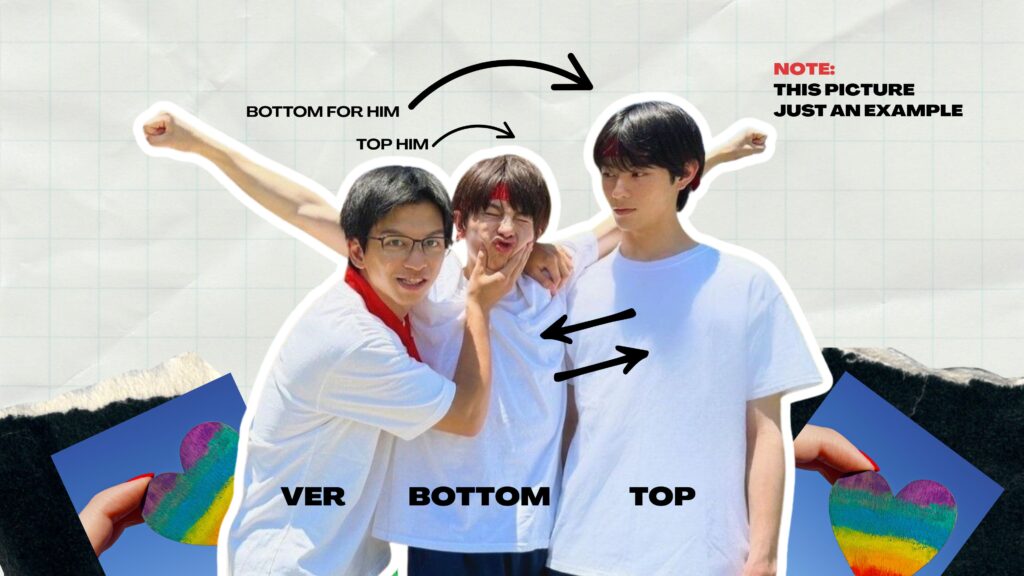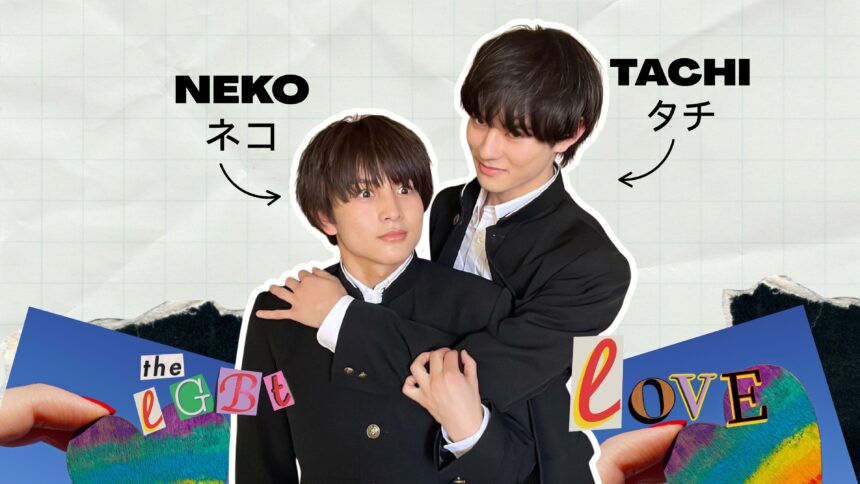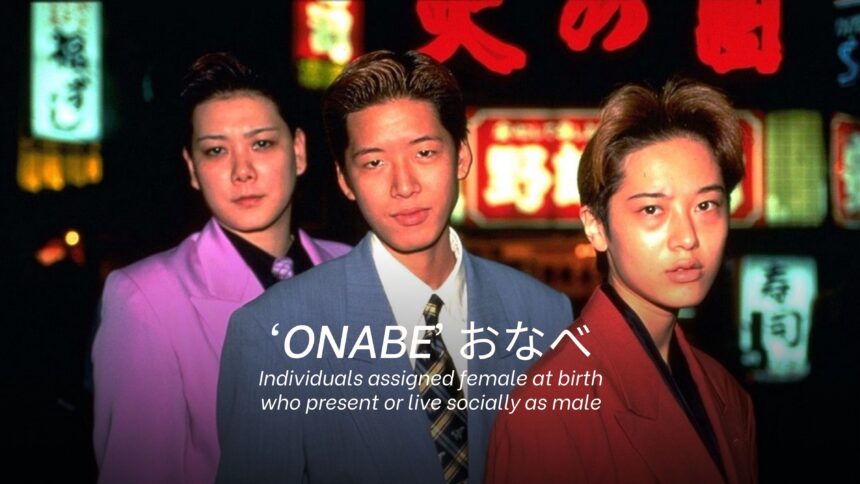In episode nine of the third season of the tragically underrated US sitcom Happy Endings, Max is encouraged by his friends to find his “gay subcategory.” As anyone familiar with LGBTQ+ culture knows, there more gay subcategories as there are options on a Starbucks menu. There is however, one area that most people will want to know before any other: top, bottom, or vers? well, let’s discuss tachi and neko!
The same is true in Japan. However, if you’re talking to a Japanese cutie, they might not understand the English terms: so we’re here to help with the Japanese equivalents, so you can better identify yourself, or understand what your partner is saying to you. Here are the meanings of tachi and neko!
What Do Tachi and Neko Mean?

Tachi (タチ) is essentially the equivalent of “top,” while neko (ネコ) is “bottom.” Easy enough so far, right? But where do these terms come from? As with queer slang in many languages, the origins of these terms are somewhat obscure, and so origins have been almost retroactively assigned to them.
Tachi has many competing theories as to its etymology, all (unsurprisingly) related to the act of penetration. One is that it stems from the kabuki term, tachiyaku (立ち役), or “standing role.” This is a term for the lead role in kabuki, and since the top is the active participant, it follows that this term could have been the basis. Others say that it is from tachi as in 太刀, or “long sword,” while others have a more basic explanation: tachi can also be read as 起ち, or “to stand up,” referring to an erection. There is no definitive answer, so pick the one you like most!
As for neko, one leading hypothesis is that it started as a contraction of neruko (寝る子). This literally means “sleeping child,” but is a general slang for “someone I’m sleeping with,” regardless of age. Their being the object of the sentence, rather than the subject, bestows the quality of their being the “bottom.” Another possible origin is that neko is also a term for a wheelbarrow, referring to how the bottom’s legs might be held. Yet another is that neko, meaning cat, is a translated meaning of “pussy,” from the English “pussycat,” though this seems unlikely.
Tachi and Neko: Are They the Same as Uke and Seme?

Some of our more terminally online readers might be asking, “well, hold on, I’m a millennial who had far too much access to the internet than I should have, so I already know uke (ウケ) and seme (セメ). What’s the difference?”
These terms do generally hold the same meaning, with seme meaning “top” and uke meaning “bottom” (literally “attacker” and “receiver,” respectively). So what’s the difference between them? Why do we need two terms for the same things?
Well, seme and uke came from the realm of fanfiction, both written and drawn. As such, they have an almost fantasy-like quality to them, and are more overtly sexual in nature. However, in the years since, they have been used by some LGBTQ+ people on dating apps to be upfront about their sexual desires. Perhaps an apt comparison might be to imagine the difference in BDSM culture between “I like to be submissive” which has more of a neko feeling, vs. “I’m a bad boy and need to be punished”, which is more akin to uke.
This can create confusion on dating apps, so it’s best to check with your match exactly what they’re looking for.
Are Tachi and Neko Considered Offensive?
No, these terms are not generally considered to be offensive. However, you might cause offense if you make assumptions about people based on their appearance or personality. Someone can be a tall buff man and still be neko, just as a short twink can be tachi.
Variations: Expanding on Definitions

OK, but what if you’re a little more easy-going, or undecided, on your preferred “role” in bed? Well, in English, we usually say “vers,” as a short for “versatile.” Well, to continue as we started, Japan also has the same concept… but with a different word.
Riba (リバ) is a short-form of the English word “reversible” (リバーシブル), and carries the exact same connotation: you can top sometimes, and bottom sometimes, depending on the person and/or situation.
You can also modify tachi and neko with Bari (バリ), which is, if you note the katakana used, is the reverse of reversible. This is to say that one is actually inflexible in their position: for example, a baritachi (バリタチ) is a steadfast top, and won’t bottom no matter the circumstances. Likewise, if you want to be topped, but your date is barineko (バリネコ) then you’re out of luck, as they are exclusively bottoms.
And there you have it! These simple terms should help you to know who’s who and what’s what when it comes to negotiating with your partner, whether you’re negotiating from the top-down or from the bottom-up.
Related Japanese LGBTQ+ Terms You Should Know
- Okama (おかま): An outdated, sometimes offensive term for effeminate gay men.
- Onabe (おなべ): Refers to AFAB individuals who present as male, often in nightlife settings.
- Onee (おねえ): Used for flamboyant, effeminate gay men or queer personalities in Japanese media.
- X-Gender (Xジェンダー): A modern Japanese term for non-binary identities.






